This document outlines strategies for tuning program performance on POWER9 processors. It discusses how performance bottlenecks can arise in the processor front-end and back-end and describes some compiler flags, pragmas, and source code techniques for addressing these bottlenecks. These include techniques like unrolling, inlining, prefetching, parallelization with OpenMP, and leveraging GPUs with OpenACC. Hands-on exercises are provided to demonstrate applying these optimizations to a Jacobi application and measuring the performance impacts.
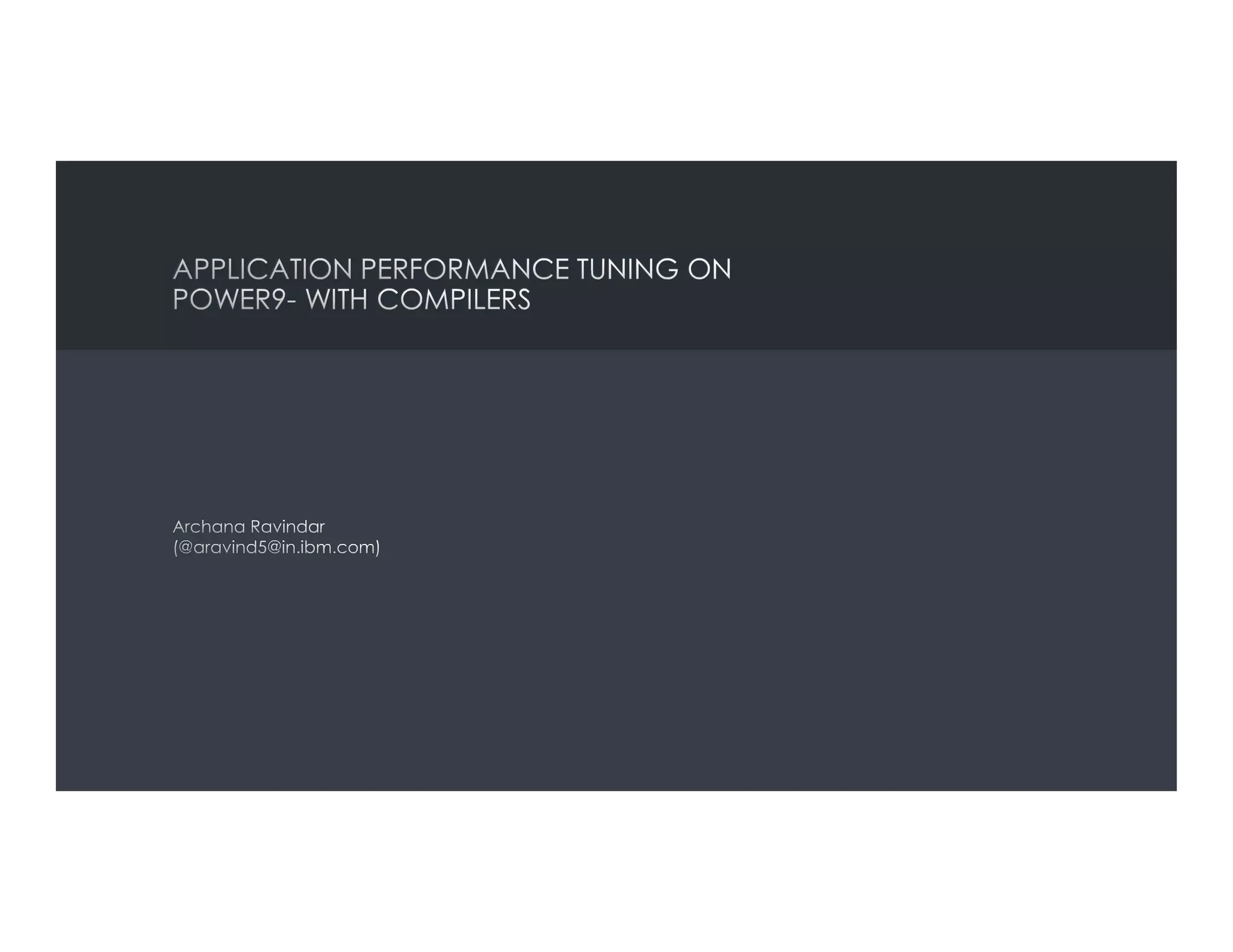
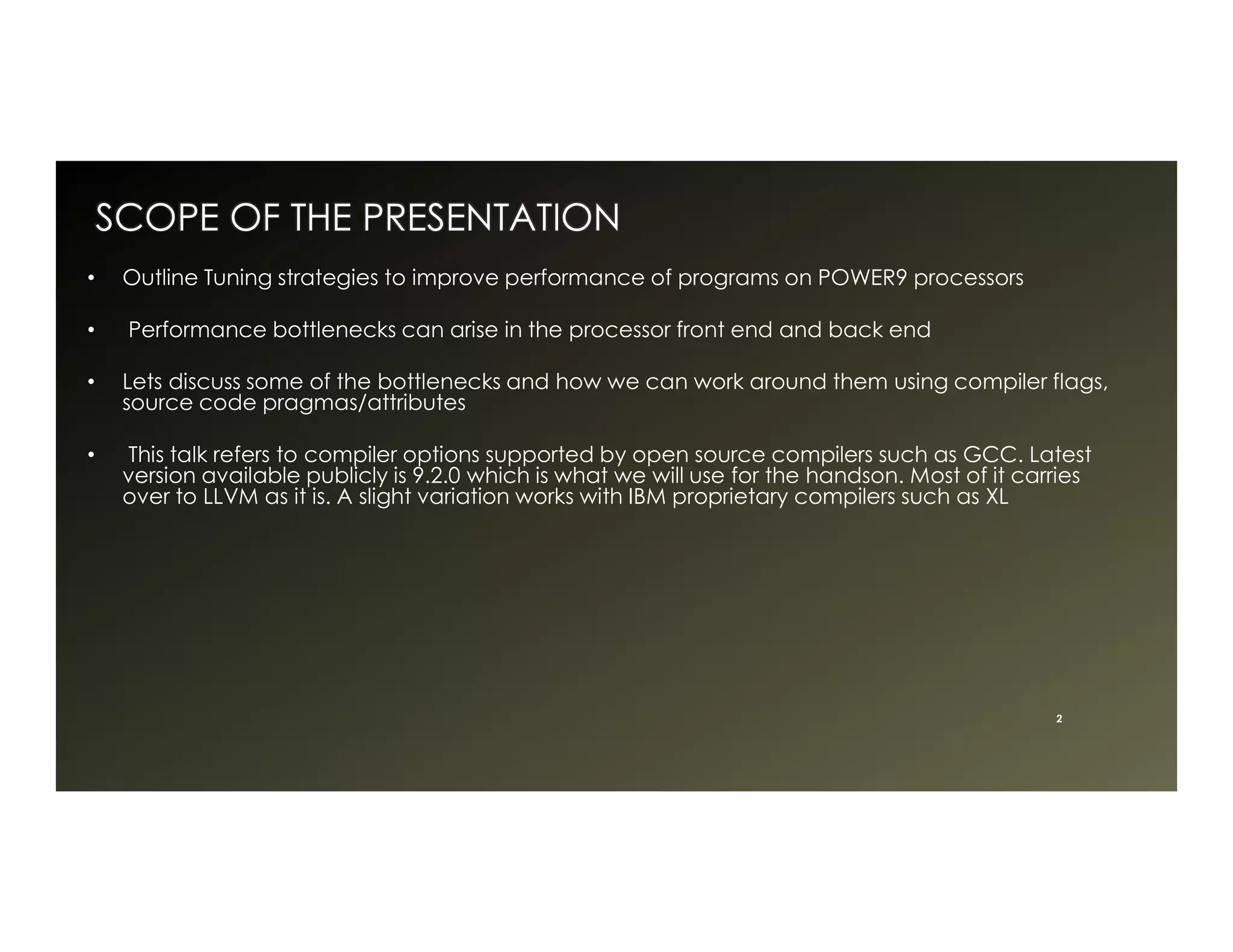
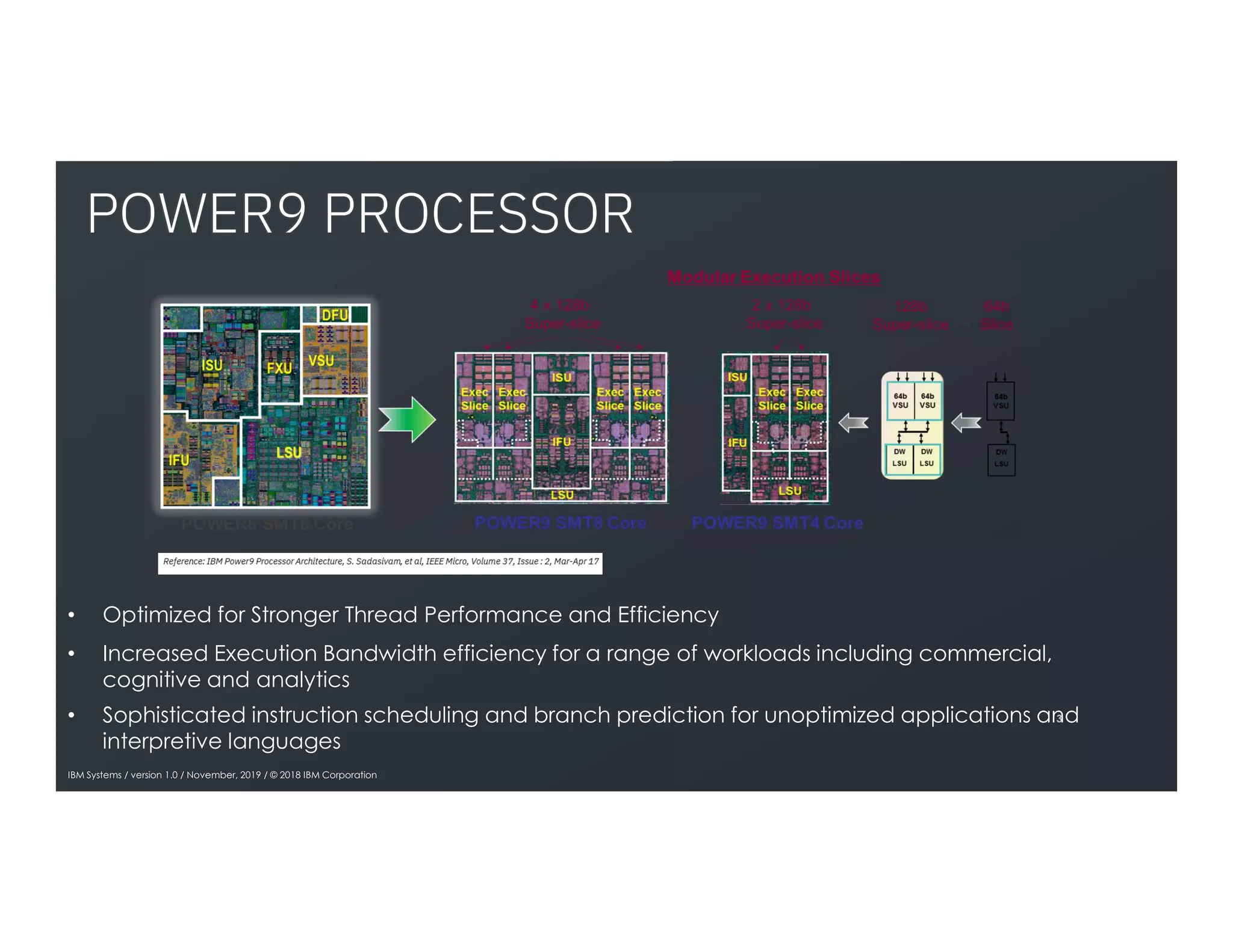
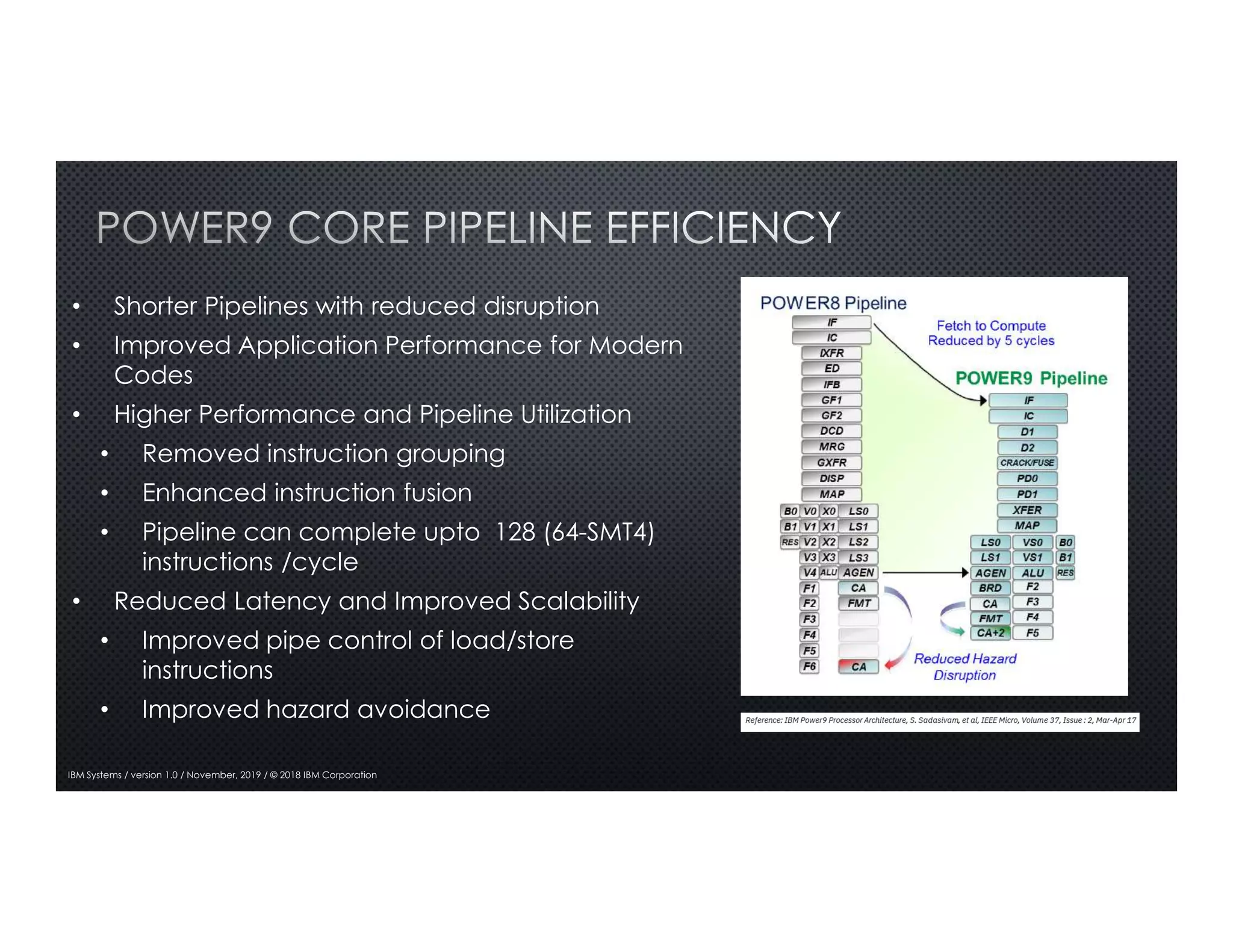


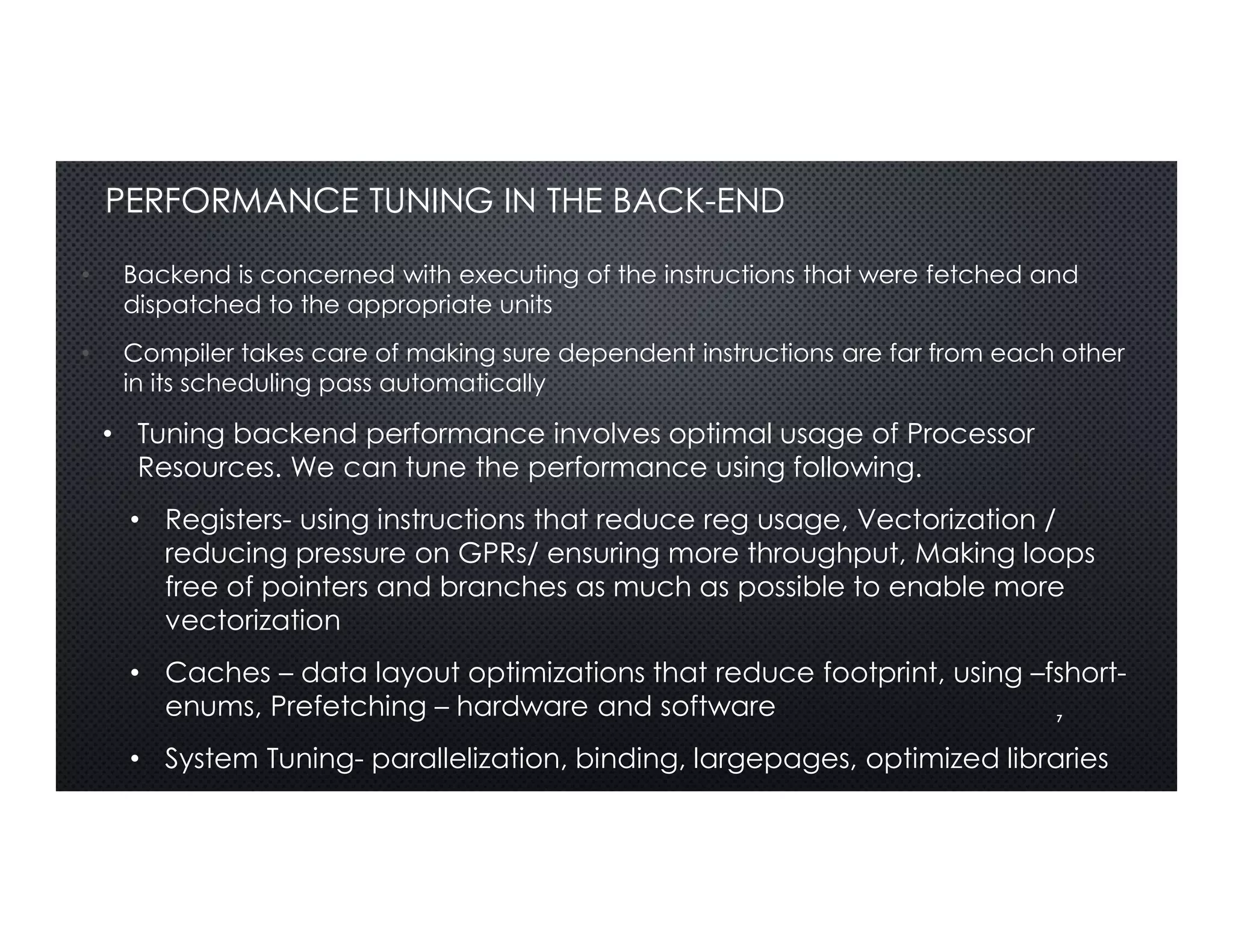
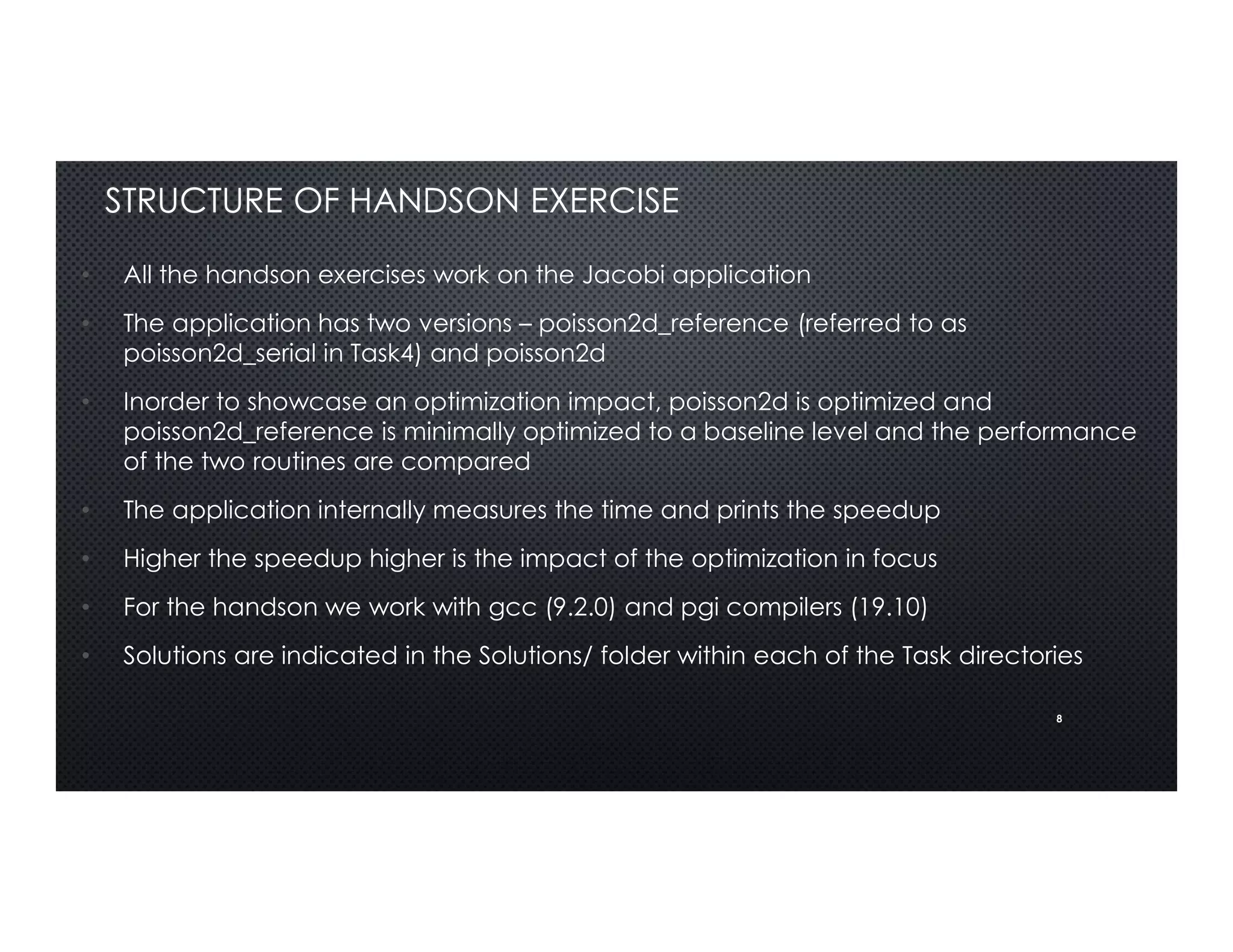
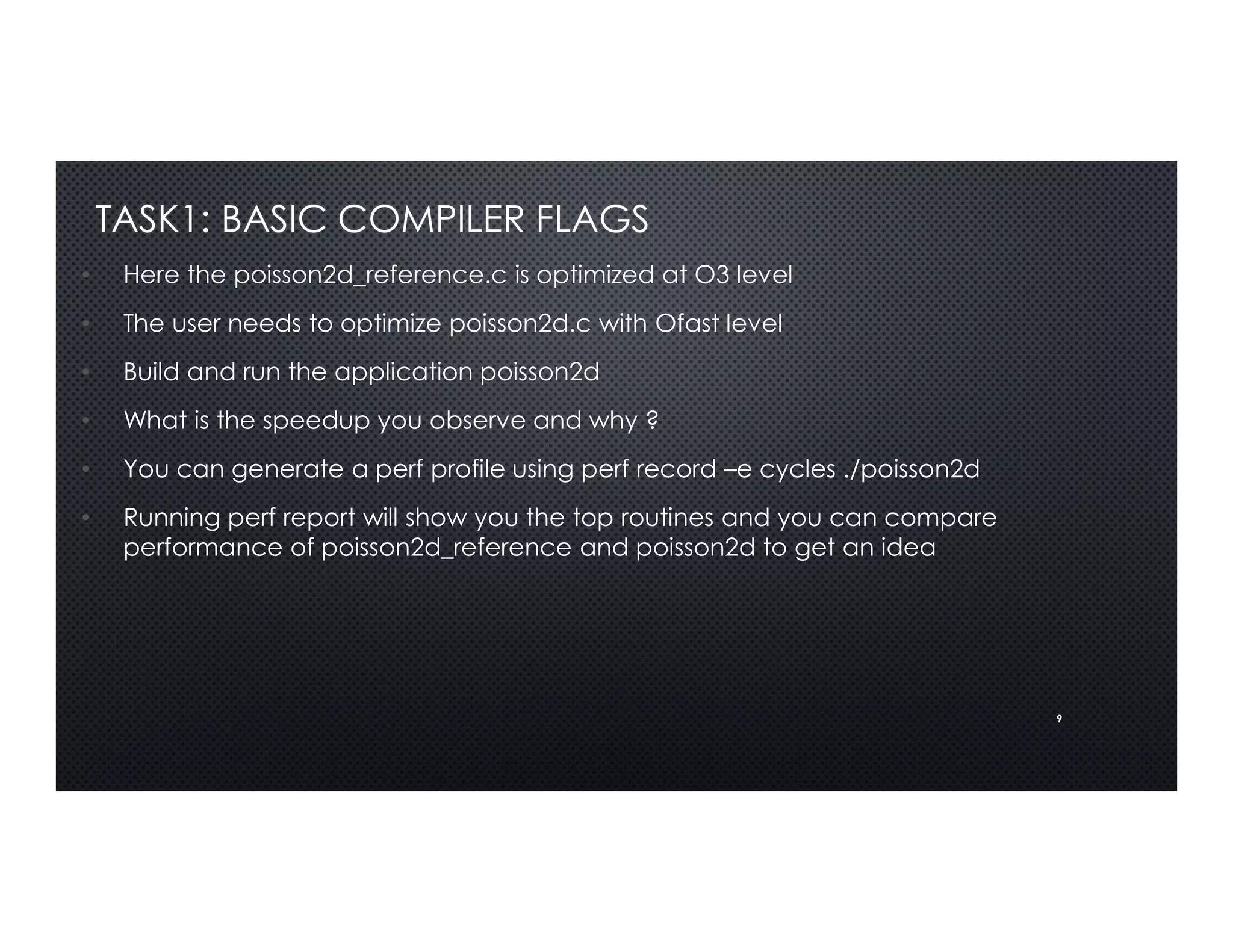
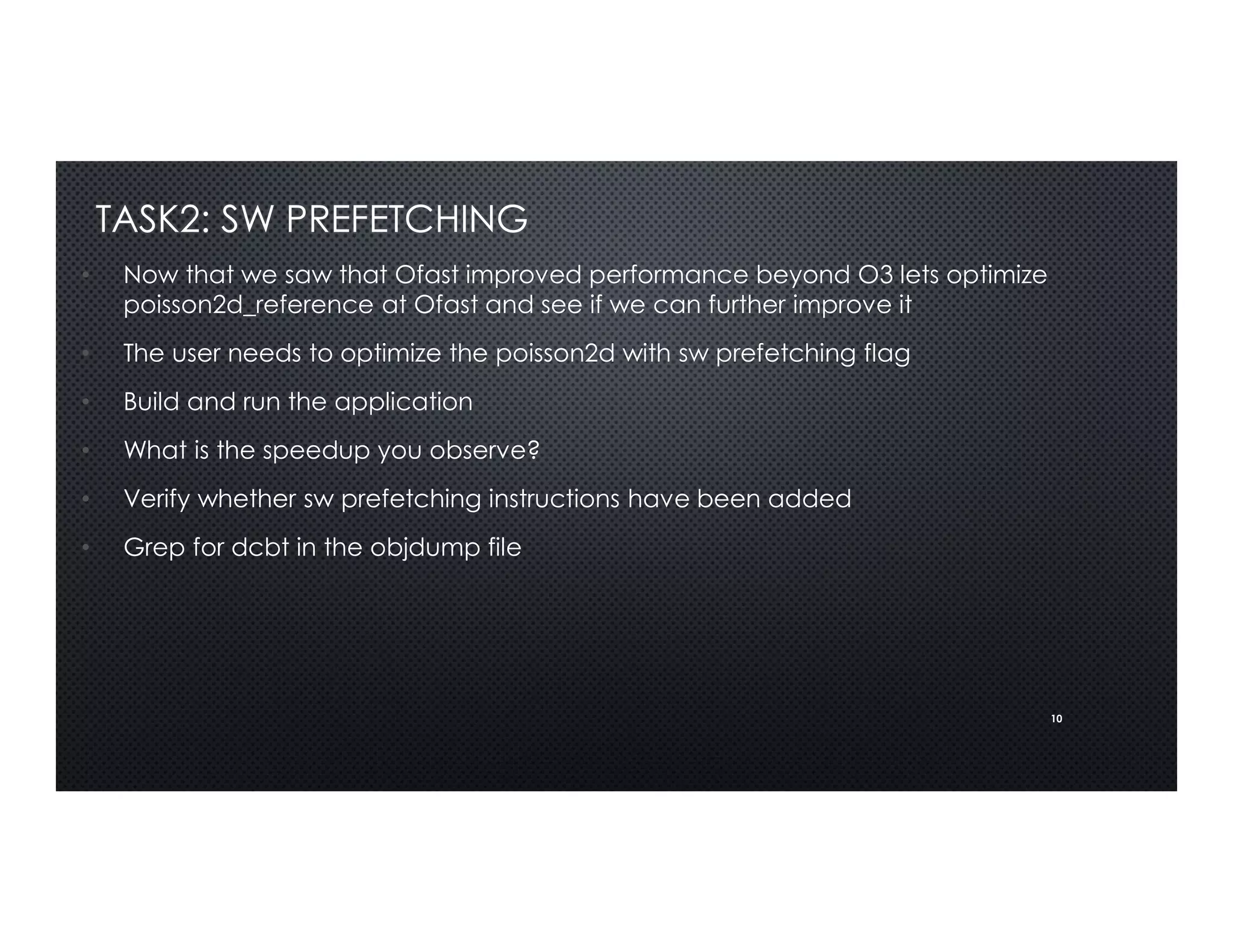
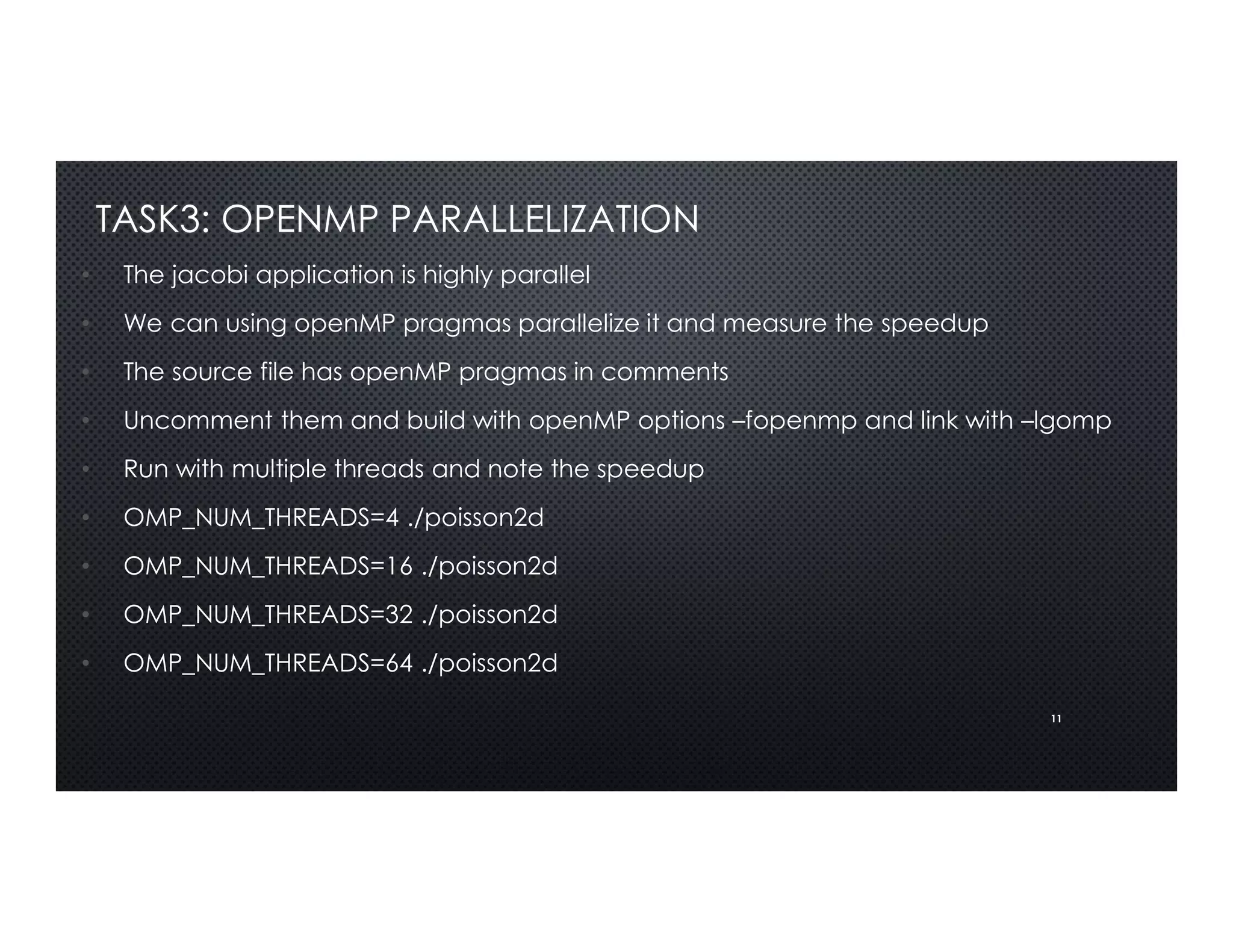
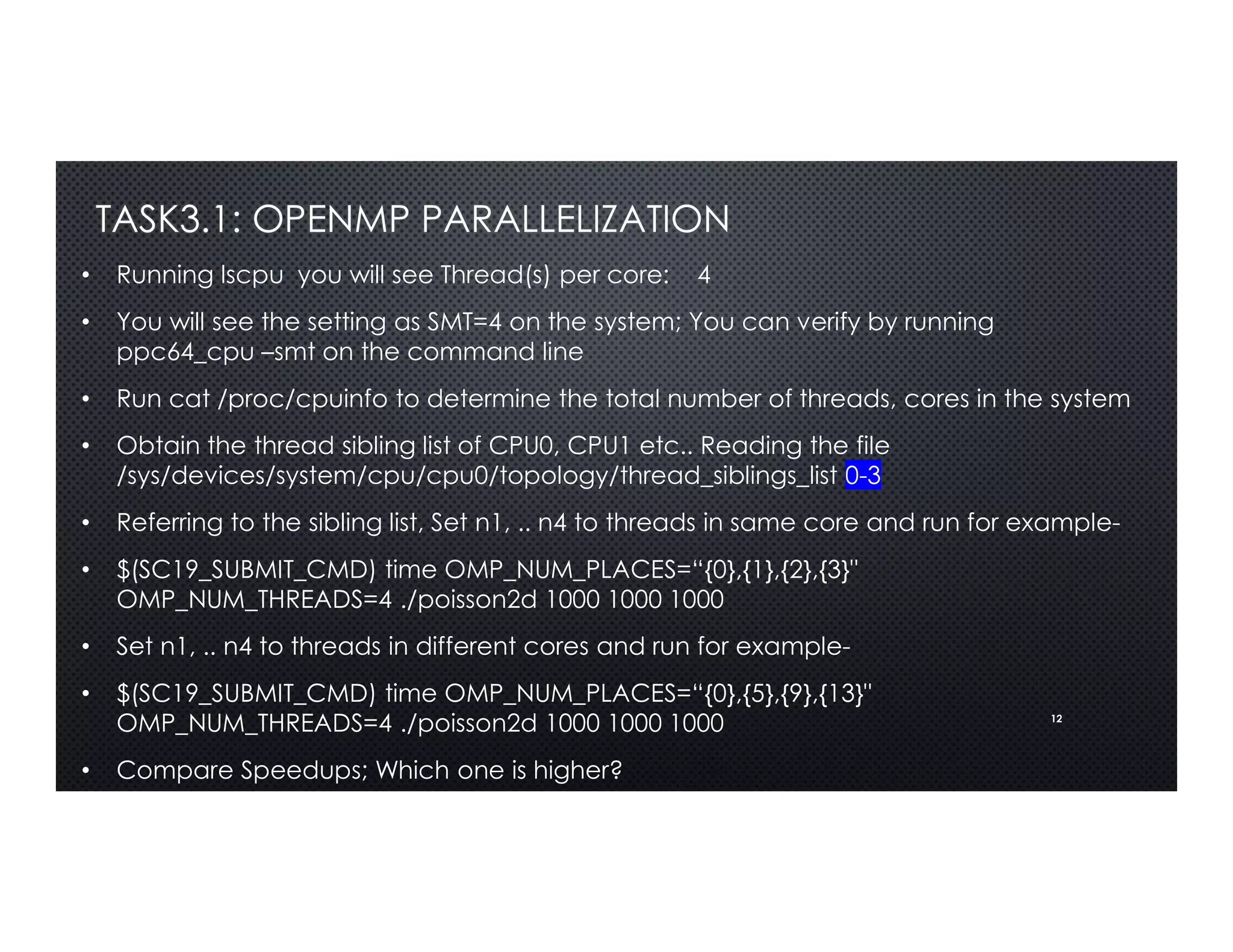

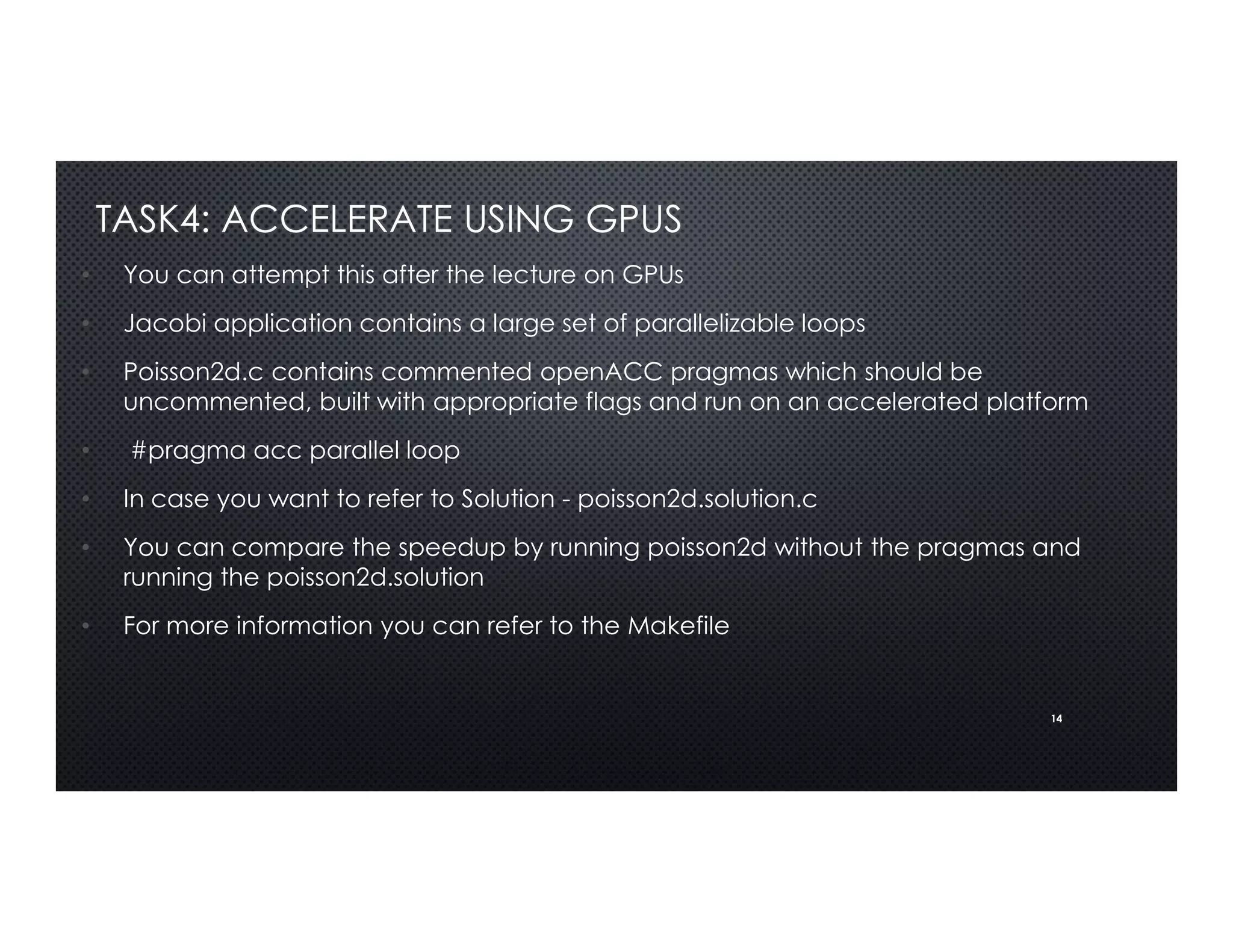
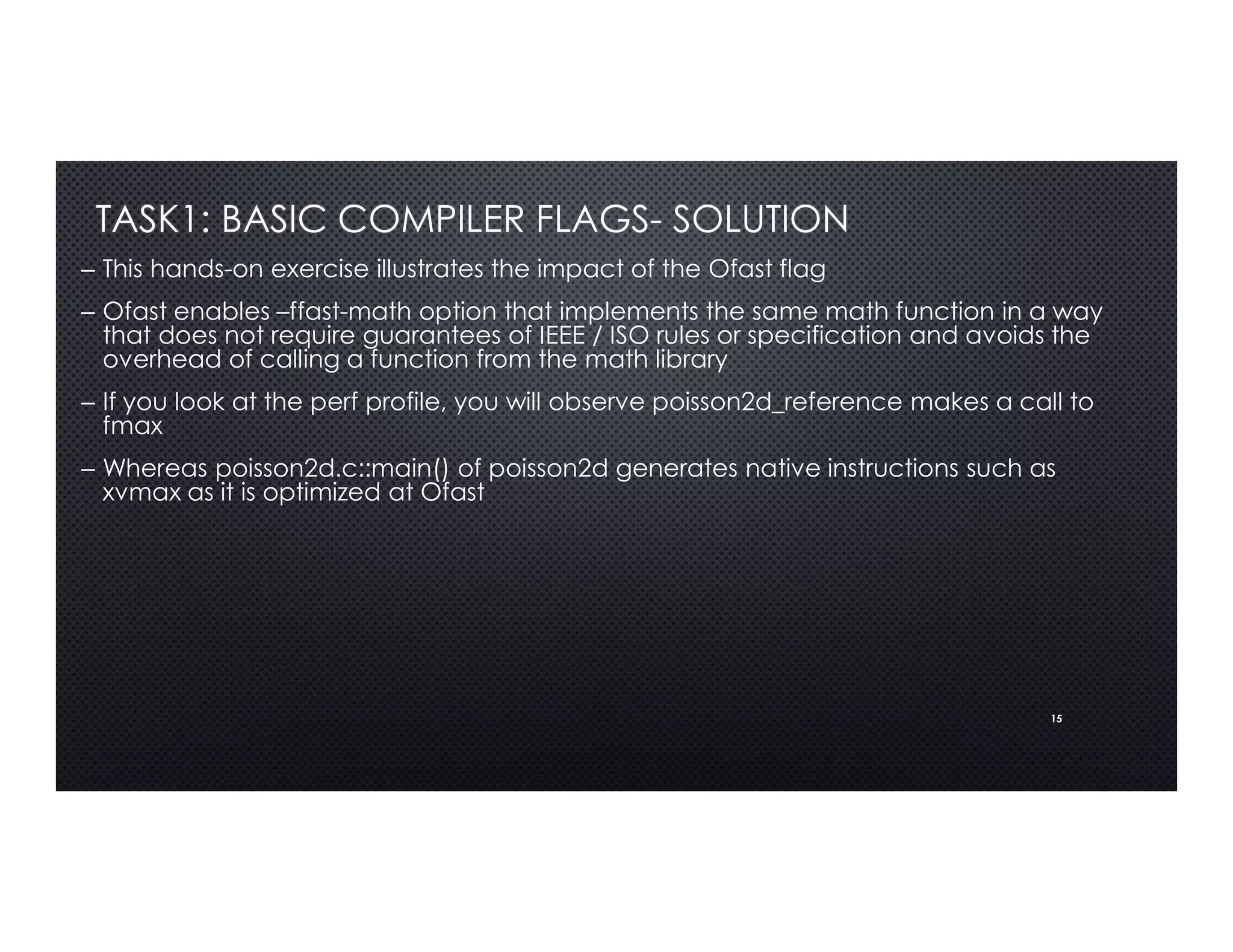
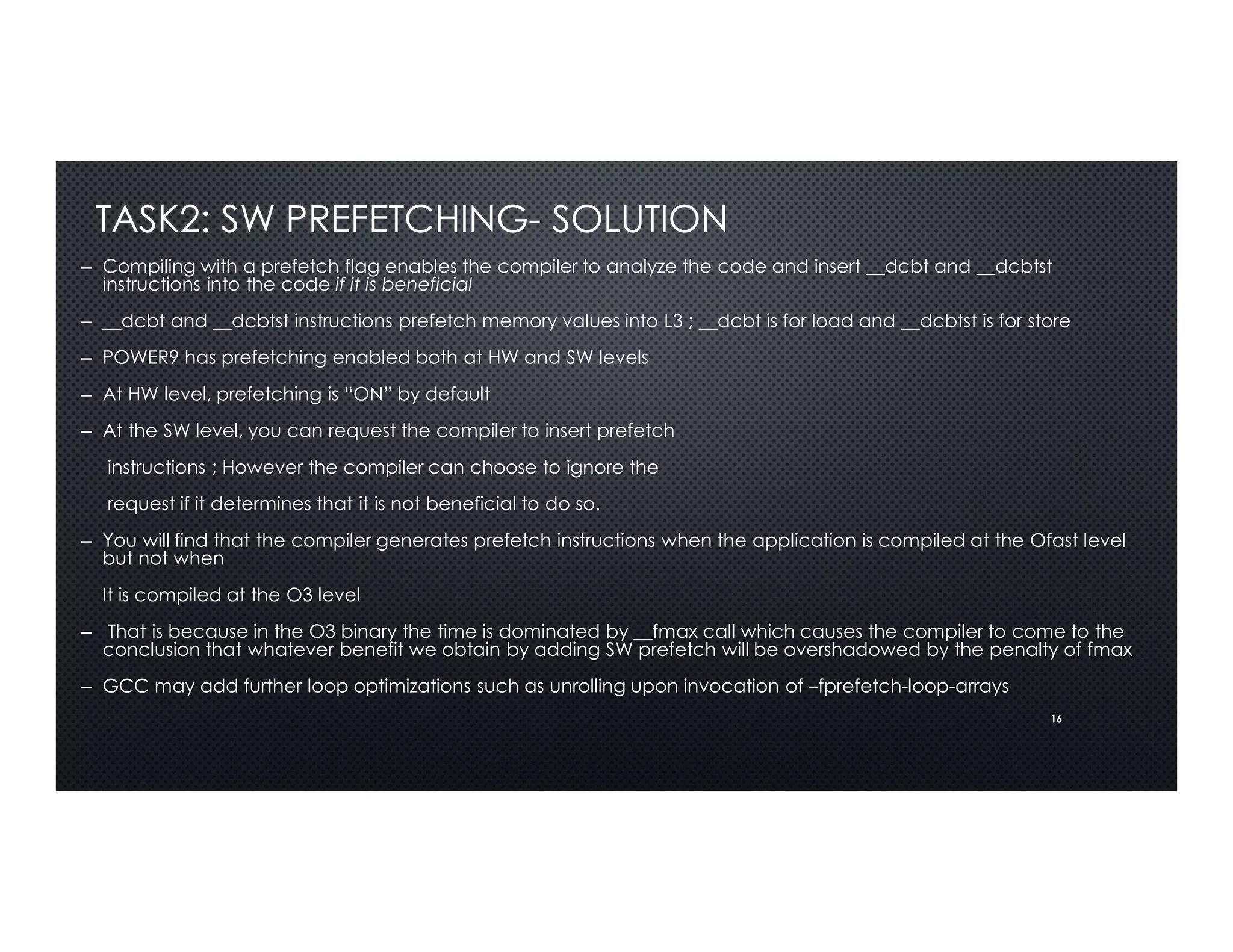
![17
TASK3.1: OPENMP PARALLELIZATION
• Running the openMP parallel version you will see speedups with increasing number of OMP_NUM_THREADS
• [student02@gorgon Task3]$ OMP_NUM_THREADS=1 ./poisson2d
• 1000x1000: Ref: 2.3467 s, This: 2.5508 s, speedup: 0.92
• [student02@gorgon Task3]$ OMP_NUM_THREADS=4 ./poisson2d
• 1000x1000: Ref: 2.3309 s, This: 0.6394 s, speedup: 3.65
• [student02@gorgon Task3]$ OMP_NUM_THREADS=16 ./poisson2d
• 1000x1000: Ref: 2.3309 s, This: 0.6394 s, speedup: 4.18
• Likewise if you bind threads across different cores you will see greater speedup
• [student02@gorgon Task3]$ OMP_PLACES="{0},{1},{2},{3}" OMP_NUM_THREADS=4 ./poisson2d
• 1000x1000: Ref: 2.3490 s, This: 1.9622 s, speedup: 1.20
• [student02@gorgon Task3]$ OMP_PLACES="{0},{5},{10},{15}" OMP_NUM_THREADS=4 ./poisson2d
• 1000x1000: Ref: 2.3694 s, This: 0.6735 s, speedup: 3.52](https://image.slidesharecdn.com/openpoweriiscdec4-v1-191218233428/75/OpenPOWER-Application-Optimization-17-2048.jpg)
![18
TASK4: ACCELERATE USING GPUS
• Building and running poisson2d as it is, you will see no speedups
• [student02@gorgon Task4]$ make poisson2d
• /opt/pgi/linuxpower/19.10/bin/pgcc -c -DUSE_DOUBLE -Minfo=accel -fast -acc -ta=tesla:cc70,managed poisson2d_serial.c -o
poisson2d_serial.o
• /opt/pgi/linuxpower/19.10/bin/pgcc -DUSE_DOUBLE -Minfo=accel -fast -acc -ta=tesla:cc70,managed poisson2d.c poisson2d_serial.o -
o poisson2d
• [student02@gorgon Task4]$ ./poisson2d
• ….
• 2048x2048: 1 CPU: 5.0743 s, 1 GPU: 4.9631 s, speedup: 1.02
• If you build poisson2d.solution which is the same as poisson2d.c with the OpenACC pragmas and run them on the platform which will
accelerate by pushing the parallel portions to the GPU you will see a massive speedup
• [student02@gorgon Task4]$ make poisson2d.solution
• /opt/pgi/linuxpower/19.10/bin/pgcc -DUSE_DOUBLE -Minfo=accel -fast -acc -ta=tesla:cc70,managed poisson2d.solution.c
poisson2d_serial.o -o poisson2d.solution
• [student02@gorgon Task4]$ ./poisson2d.solution
• 2048x2048: 1 CPU: 5.0941 s, 1 GPU: 0.1811 s, speedup: 28.13](https://image.slidesharecdn.com/openpoweriiscdec4-v1-191218233428/75/OpenPOWER-Application-Optimization-18-2048.jpg)
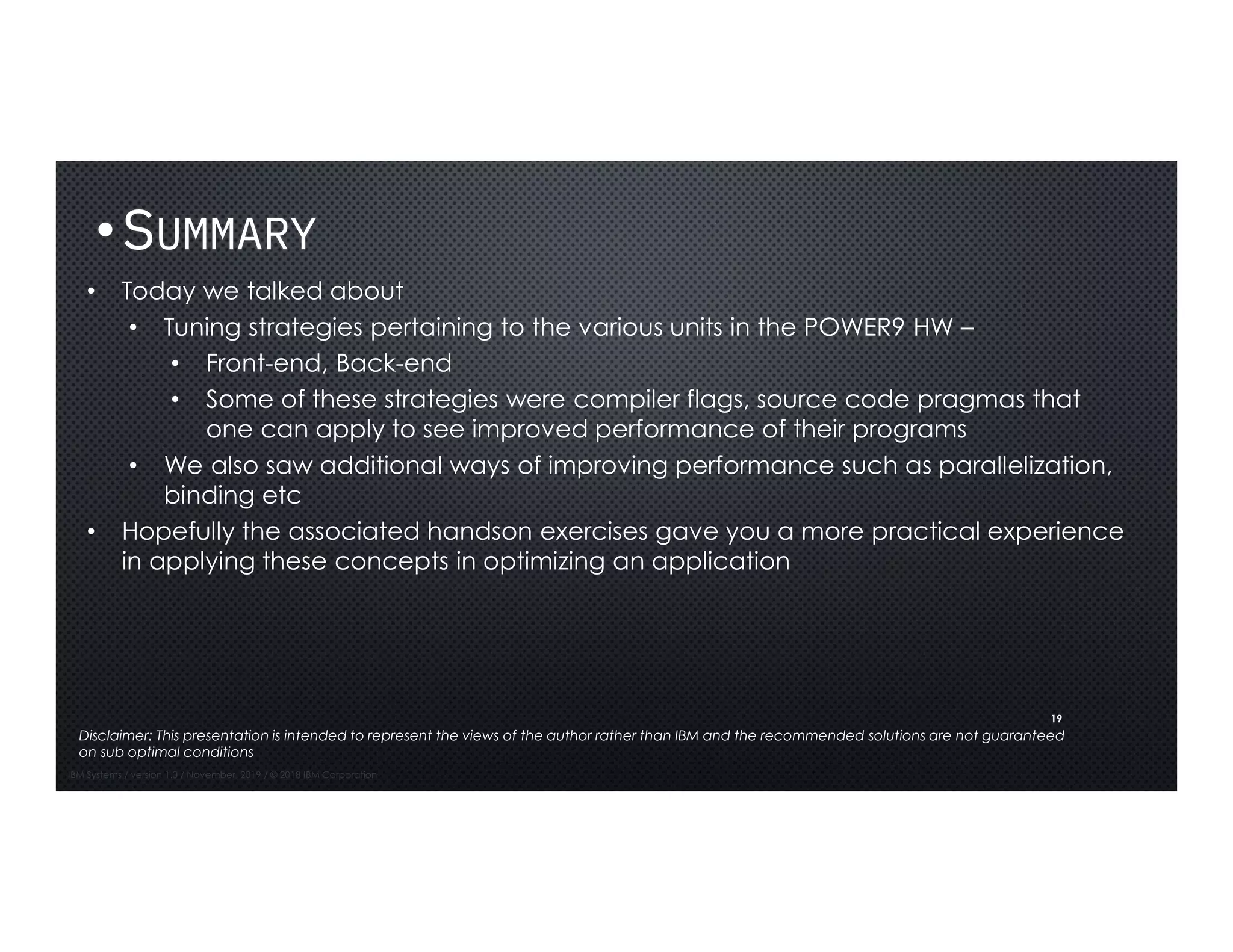

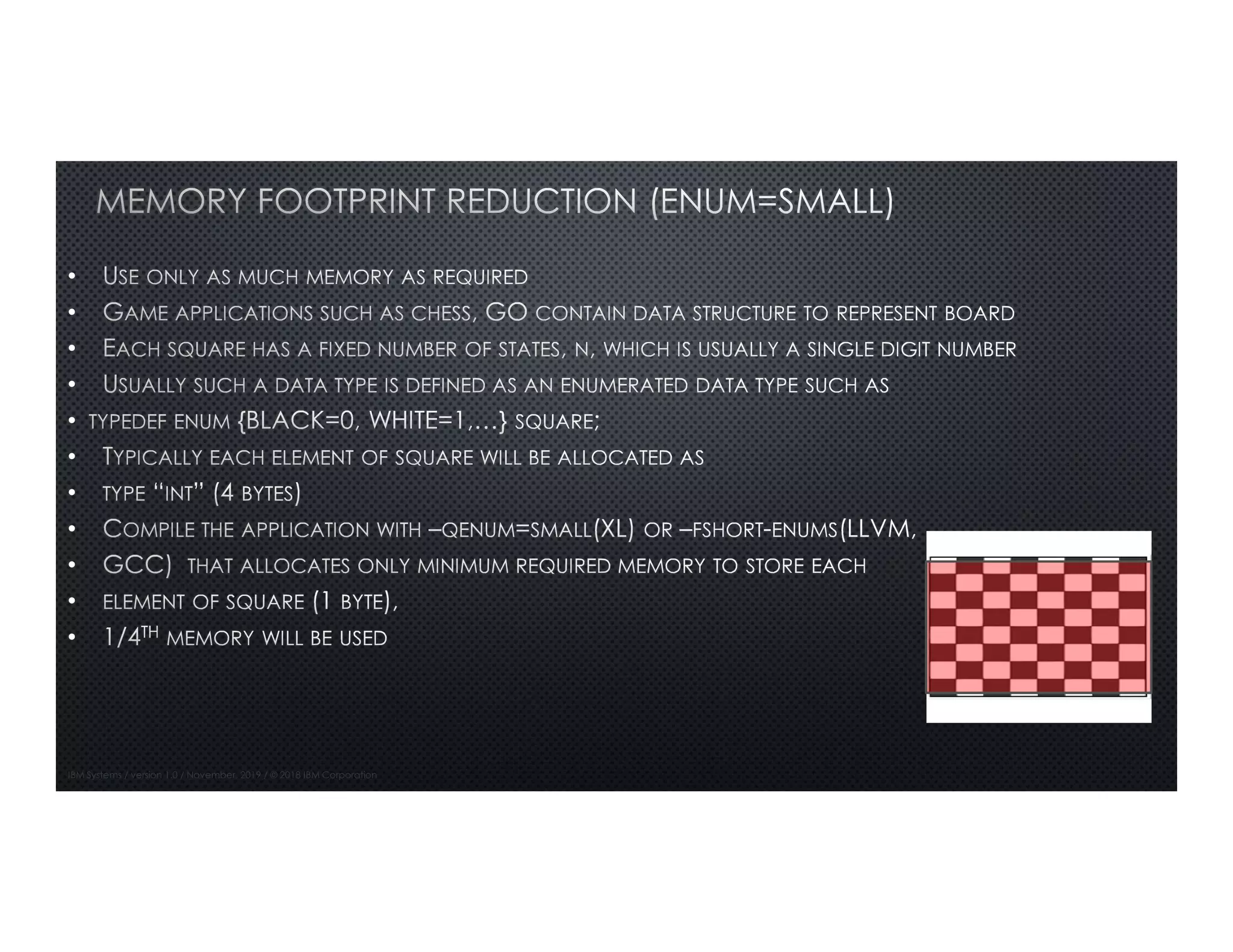
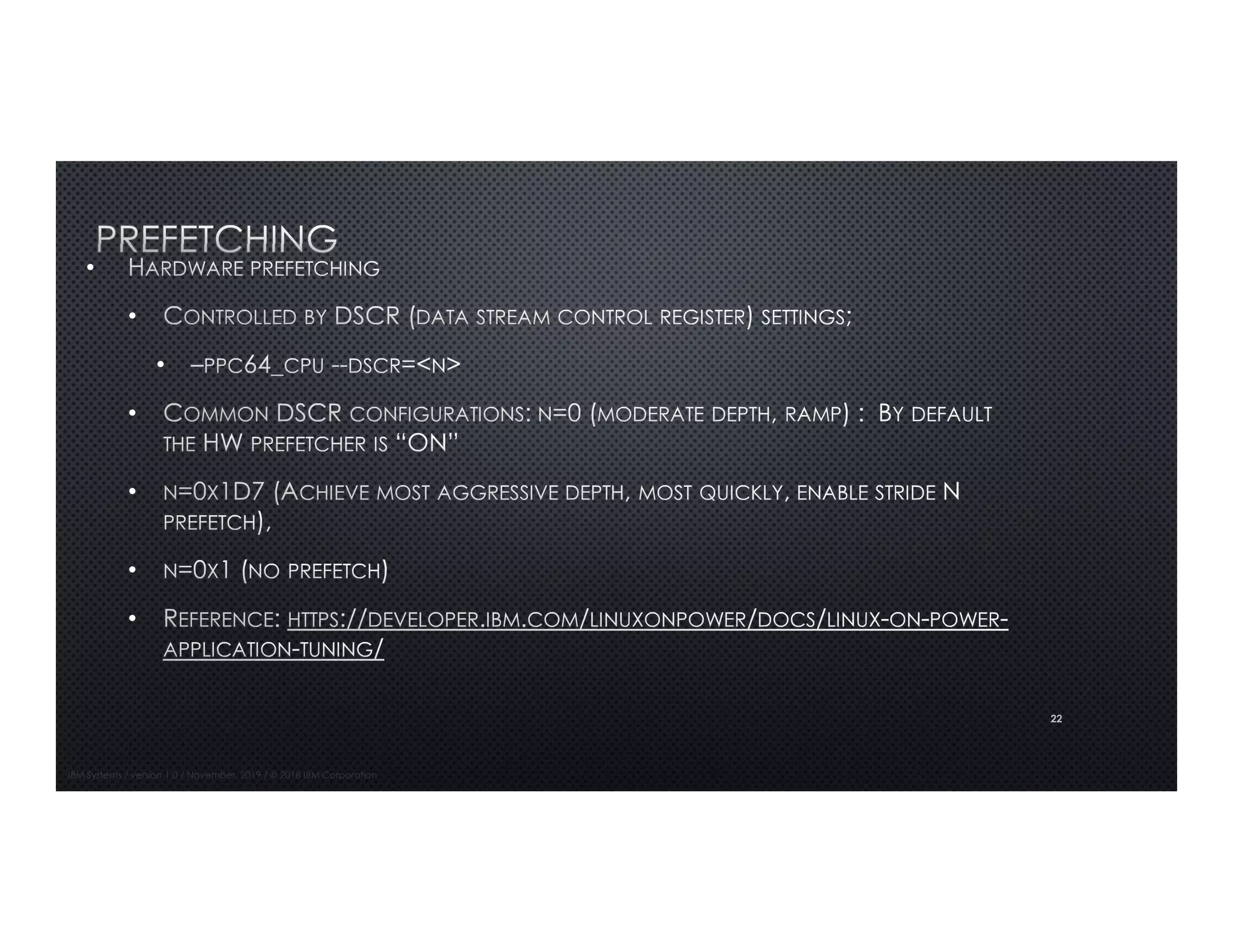
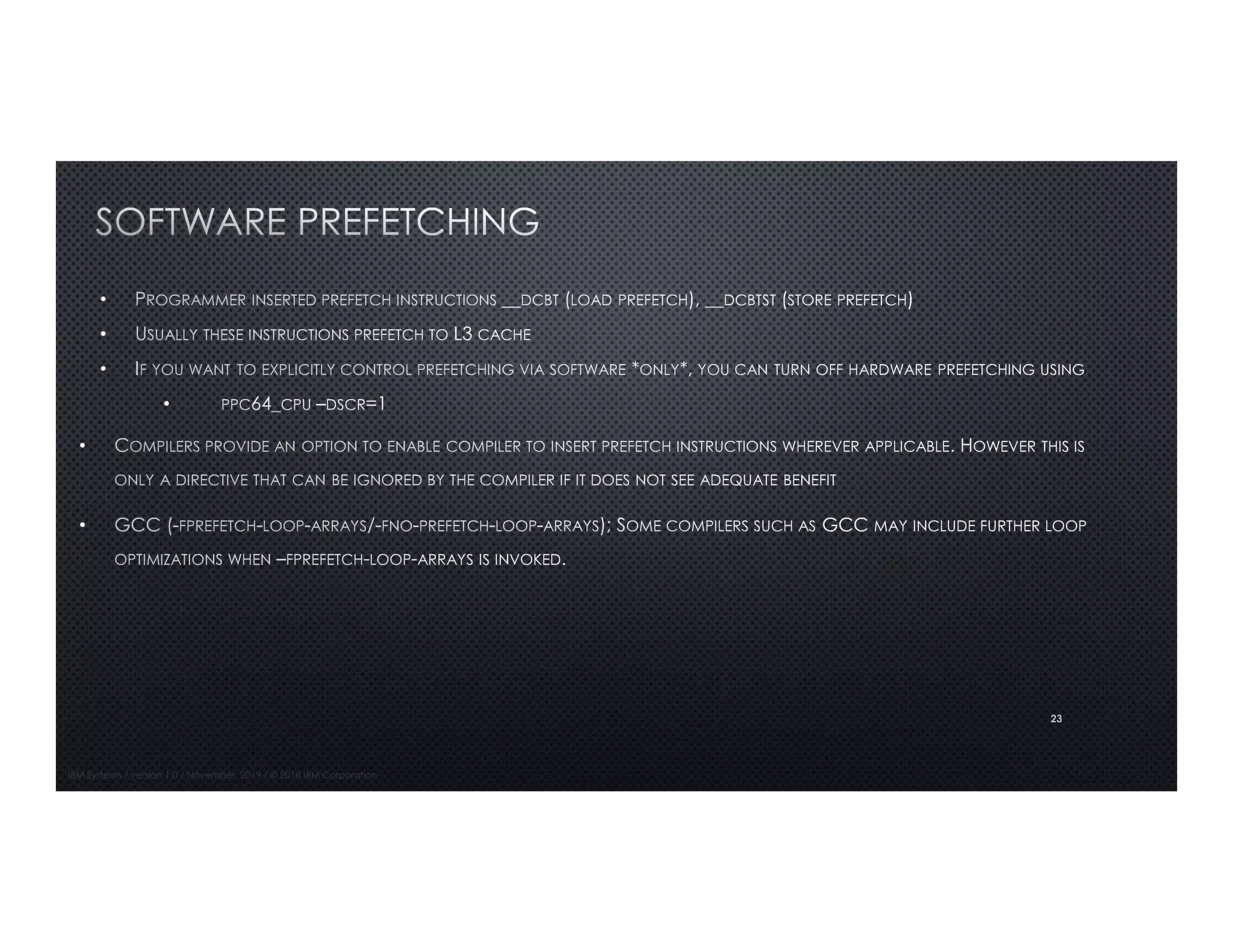
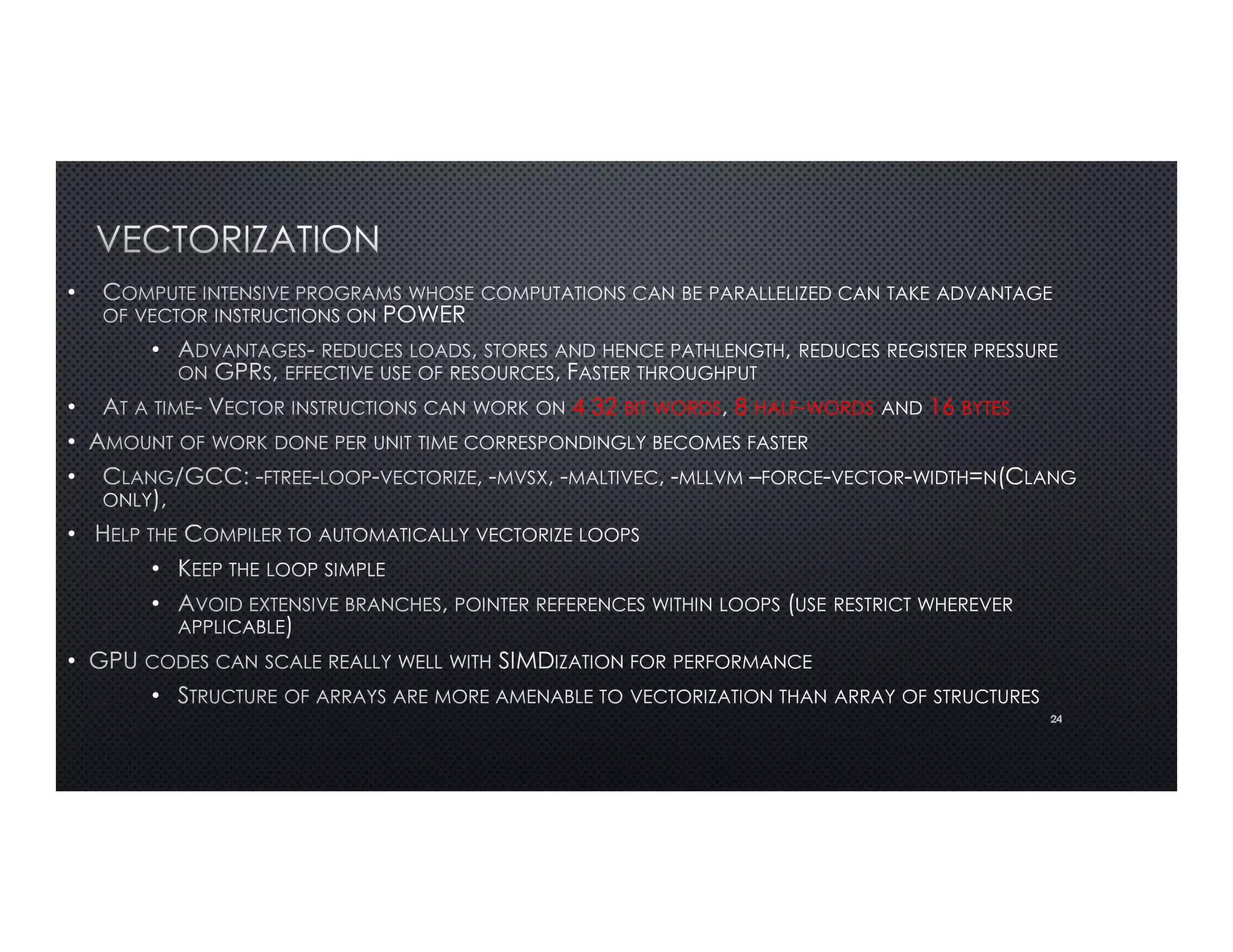
![25
Flag Kind XL GCC/LLVM
Can be simulated
in source
Benefit Drawbacks
Unrolling -qunroll -funroll-loops
#pragma
unroll(N)
Unrolls loops ; increases
opportunities pertaining to
scheduling for compiler Increases register pressure
Inlining -qinline=auto:level=N -finline-functions
Inline always
attribute or
manual inlining
increases opportunities for
scheduling; Reduces
branches and loads/stores
Increases register
pressure; increases code
size
Enum small -qenum=small -fshort-enums -manual typedef Reduces memory footprint
Can cause issues in
alignment
isel
instructions -misel Using ?: operator
generates isel instruction
instead of branch;
reduces pressure on branch
predictor unit
latency of isel is a bit
higher; Use if branches
are not predictable easily
General
tuning
-qarch=pwr9,
-qtune=pwr9
-mcpu=power8,
-mtune=power9
Turns on platform specific
tuning
64bit
compilation-q64 -m64
Prefetching
-
qprefetch[=aggressiv
e] -fprefetch-loop-arrays
__dcbt/__dcbtst,
_builtin_prefetch reduces cache misses
Can increase memory
traffic particularly if
prefetched values are not
used
Link time
optimizatio
n -qipo -flto , -flto=thin
Enables Interprocedural
optimizations
Can increase overall
compilation time
Profile
directed
-fprofile-generate and
–fprofile-use LLVM has
an intermediate step](https://image.slidesharecdn.com/openpoweriiscdec4-v1-191218233428/75/OpenPOWER-Application-Optimization-25-2048.jpg)